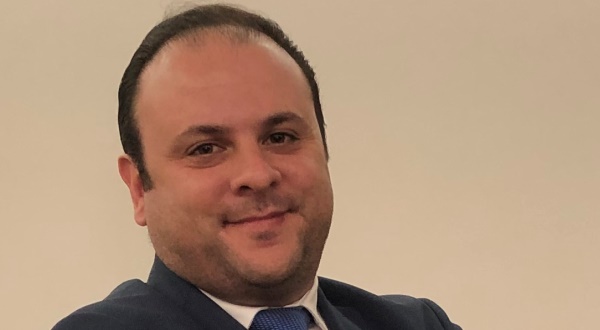Telecom
5G Core, Evolve from 4G to 5G Cost Efficiently

By Said Zantout
As 5G picks up speed, the new networks will co-exist with the existing 4G ones in the coming years. For Communication Service Providers (CSPs), flexibility in balancing cost-optimized versus performance optimized network deployment is crucial to maximize profitability and take advantage of the wide range of business opportunities.

Said Zantout, Ericsson
Basically, it means they need to have the option to migrate to 5G in their own time and in alignment with their business needs.
The journey to 5G Core is not simple, though, and will imply a technology shift with the adoption of a new 3GPP defined network architecture (service-based architecture) and new network functions built on cloud native technology. With service providers’ needs and concerns in mind we have developed the dual-mode 5G Core solution.
Dual-mode 5G Core provides that kind of desired control by combining Evolved Packet Core (EPC) and 5G Core network functions into a common cloud native platform. CSPs can get the most out of cloud native, microservices and user plane performance by implementing the dual-mode core solution as the best way for efficient control of Total Cost of Ownership (TCO) while smoothly migrating to 5G.
As hard as it sounds to achieve challenging business and operational goals while migrating to a 5G Core, with dual mode it is possible.
If we look at Ericsson’s dual mode 5G Cloud Core solution, it is fully based on cloud native principles, with software architecture being based on microservice technology.
This is to ensure that the underlying infrastructure will have better capacity and elasticity, which in turn will offer high levels of orchestration and automation for operational efficiency.
Dual-mode solution enables CSPs to manage one network instead of two and add programmability to their network. The decomposition of software into microservices facilitates a fast, low-cost method of introducing new services on a small scale.
At the same time, it supports easy and effective scaling of services from hundreds of users to millions and this is exactly how CSPs can address new business opportunities or pursue those that have been difficult to address until now.
While no journey to a future core will be alike, what applies to every CSP is the need to have a holistic view on cost. A report by Ericsson titled “Dual-mode 5G Cloud Core: TCO benefits” highlights that substantial saving is possible in various areas of dual-mode cloud native operations, including:
— Up to 20 percent of capex in Core network infrastructure
— Up to 15 percent savings in database infrastructure
— 70 percent OpEx savings in configuration of policies
— Up to 80 percent cost savings in network integration
— More than 60 percent reduced OpEx for software upgrades
As 5G evolves, dual mode core supports both Evolved Packet Core (EPC) and 5G core, combining both functionalities and offering a uniform operational maintenance that is able to scale with the speed that 5G use cases demand.
Migrating to a 5G NR SA and 5GC network is crucial for our customers’ success, enabling them to unlock key 5G functionalities like faster speeds, ultra-low latency and advanced network slicing – allowing our customers to support increasingly complex 5G use cases such as automated manufacturing, remote healthcare and connected vehicles.
This migration will also allow service providers to simplify operations and service agility, enhance user experience with better coverage and improve network capabilities.
To secure new 5G revenue streams while continuing to support existing 4G customer base, service providers can begin by introducing 5G New Radio (NR) non-standalone (NSA) and run both generations side by side supported by the Evolved Packet Core while migrating to 5G NR standalone (SA) and a 5GC network.
At Ericsson, we have been learning from previous technology shifts. As we enter 5G era with all its complexity and unknown opportunities, we know the value of migrating networks at own pace and dual-mode 5G Cloud Core solution provides enhancements that enables this vision.
By implementing the dual-mode solution, service providers will have more control to migrate to 5G on their own pace and in alignment to their business needs.
Said Zantout is Head of Solution Area OSS, Core and Cloud at Ericsson Middle East and Africa.
Telecom
Glo Boosts Network Capacity for Enhanced Customer Experience

Globacom is rolling out extensive network improvements to deliver a significantly better experience for its customers. These proactive measures are designed to ensure subscribers continue to get excellent value, particularly following recent tariff adjustments.

The ongoing upgrade involves a widespread deployment of new base stations, expanding coverage to previously underserved areas, and strengthening existing coverage in growing population centres. This strategic densification will guarantee superior network quality for both voice and data services across the entire country.
In a significant investment, Globacom is also re-routing its fibre infrastructure in several locations where road construction has compromised the fibre, including vital routes like Auchi-Okene and Benin-Ekpoma, Lafia-Akwanga, Minna-Abuja, and Funtua-Gusau.
“We decided, at a huge cost, to relocate the fibres, many of which had been vandalized in several places by uncoordinated road construction activities, in order to bring best-in-class services to customers”, the company disclosed.
Customers can look forward to brighter days ahead as Glo completes the deployment of hundreds of new sites nationwide. This year alone, thousands of 4G LTE sites have been activated in key cities, with additional hundreds of new sites are currently being deployed to further boost connectivity. These efforts are supported by massive upgrades of backhaul capacity (microwave and fibre) and a seamless improvement in the core network.
Globacom assured its subscribers that these ongoing initiatives will translate to enhanced service delivery, expanded coverage, faster data speeds, and overall improved network performance. The company plans to add over a thousand new sites in the next year, prioritizing LTE expansion to deepen its reliable data reach and extending fibre to more hub sites for greater service robustness.
Furthermore, Glo is committed to minimizing its carbon footprint by expanding hybrid power solutions and relying more on battery power across its sites, representing another substantial investment.
Despite these positive developments, Globacom continues to highlight the challenge of deliberate sabotage of network equipment, even with its designation as critical national infrastructure, emphasizing the need for stronger protective measures.
Telecom
MTN’s Uto Ukpanah Becomes 30th ICSAN President, Reinforcing Female Leadership in Governance

Nigeria’s corporate landscape is witnessing a significant transformation, with women increasingly occupying leadership positions and reshaping the narrative at the highest levels. A striking example of this shift unfolded recently as Mrs. Uto Ukpanah, FCIS, Company Secretary of MTN Nigeria, was inaugurated as the 30th President and Chairman of Council of the Institute of Chartered Secretaries and Administrators of Nigeria (ICSAN).

L-R: Dr. Karl Toriola, CEO, MTN Nigeria; Uto Ukpanah, President, ICSAN and Company Secretary, MTN Nigeria, and Aniekan Ukpanah, Managing Partner, Udo Udoma & Belo-Osagie at the Investiture Ceremony of Uto Ukpanah as ICSAN 30th President, held in Lagos on Wednesday, July 23, 2o25.
Historically, ICSAN was led exclusively by men for nearly 57 years. However, the trend began to change in 2023 when Mrs. Funmi Ekundayo broke barriers as the Institute’s first female president. In 2025, her successor and former vice president, Mrs. Ukpanah, has now become only the second woman to assume the presidency, marking a major milestone in Nigeria’s governance sector.
This development aligns with the broader momentum for women’s leadership across Nigeria’s business ecosystem. MTN Nigeria stands out as a champion of gender diversity. The company’s 2024 Annual Report reveals that women now constitute 41.4% of the workforce, a marked increase by 3% compared to 2023.
Among executive management, women hold 34.7% of positions, while female board representation stands at 21.4%. MTN’s deliberate drive, bolstered by initiatives such as the Women in Tech programme and the Y’ello Mums Internship, is fostering a pipeline of female talent across all tiers.
Female leaders at MTN are shaping strategy and impact on multiple fronts: Dr. Mosun Olusoga chairs the MTN Foundation; Odunayo Sanya serves as the Executive Director, MTN Foundation; Dr. Omobola Johnson contributes as a Non-Executive Director of the Board of Directors; and a host of others including Lynda Saint-Nwafor, Onyinye Ikenna-Emeka, Esther Akinnukawe, Ugonwa Nwoye, among others, lead critical business functions.
MTN’s policy of inclusion is reflected not just in numbers, but in recent recognitions. In 2024, Odunayo Sanya was named CSI Personality of the Year at the Nigeria Tech Innovation & Telecoms Awards, and Josephine Sarouk, Managing Director of Bayobab Nigeria (subsidiary of MTN), received the Woman in Telecoms Award in London.
Mrs. Ukpanah herself was honoured as the first-ever African recipient of the Global Corporate Secretary of the Year Award by the Corporate Secretaries International Association (CSIA), a testament to her pioneering leadership.
Ukpanah’s investiture as ICSAN President was held on July 23, 2025, in Lagos, attracting an array of dignitaries, government officials, and business leaders. Chaired by Prof. Hakeem Belo-Osagie, with a keynote delivered by Dr. Omobola Johnson, the event saw the full support of MTN Nigeria’s top brass, including CEO Karl Toriola and Board Chairman Dr. Ernest Ndukwe. In his goodwill message, Dr. Ndukwe remarked:
“This honour is a fitting recognition for Uto’s distinguished career, unwavering professionalism, and deep commitment to the principles of good governance. Uto has consistently exemplified the values that I believe ICSAN upholds, and we are confident that her leadership will further strengthen the Institute’s aspirations towards promoting excellence in governance.
“At MTN Nigeria, we are proud of her achievements and reaffirm our full support as she embarks on this important assignment. We look forward to the positive impact her tenure will bring to ICSAN.”
Also, her husband, Aniekan Ukpanah, Senior Partner at Udo Udoma & Belo-Osagie, described her as “a passionate steward, rooted in family, bound by purpose, and committed to legacy.” Outgoing ICSAN President Mrs. Ekundayo added that Ukpanah is “astute, visionary, and principled.”
Mrs. Ukpanah’s ascendancy to ICSAN’s top office, and MTN’s visible support, do more than celebrate personal or organisational victories; they signal a new era, one in which women are not just present, but are key architects of governance and future prosperity for Nigeria.
Telecom
NIMC Warns Nigerians Against Selling NIN Data Amid Rising Identity Fraud

National Identity Management Commission (NIMC) has issued a stern warning to Nigerians over the illegal sale of personal data, including the National Identification Number (NIN), amid reports of a growing underground market targeting unsuspecting citizens.

In a statement released on Sunday, the Commission expressed deep concern following revelations by the Economic and Financial Crimes Commission (EFCC) that young Nigerians are offering between ₦1,500 and ₦2,000 to individuals in exchange for their NIN and other sensitive details. These details are then allegedly resold to certain fintech platforms for as much as ₦5,000.
“This is not just a case of minor fraud, it’s a threat to national security and personal safety,” said Dr. Kayode Adegoke, Head of Corporate Communications at NIMC. “When you hand over your data to unknown agents, you are essentially handing over control of your identity.”
The Commission reiterated that it will not be held liable for any misuse of personal data shared voluntarily by individuals or through third parties for financial gain or inducement.
NIMC further cautioned service providers to ensure that every NIN presented for services is properly verified using approved channels before access is granted.
To safeguard personal identity, Nigerians are encouraged to download the NINAuth App, available on Apple iOS and Google Play Store. The app enables users to manage, secure, and control access to their NIN data.
“The story of your identity should be written by you, not sold for a quick payout,” the Commission stated.
NAN reports that the NIMC’s advisory comes amid rising concerns over digital identity theft and the misuse of personal data in Nigeria’s expanding fintech ecosystem.

 E-Business2 days ago
E-Business2 days agoHuawei Unveils AI Computing System to Challenge Nvidia’s Flagship Product

 E-Financial2 days ago
E-Financial2 days agoUnion Bank Rewards Customers with ₦5 Million Each in Save and Win Palli Promo Season 4 Grand Finale

 E-Financial2 days ago
E-Financial2 days agoEdun, Finance Minister Inaugurates NDIC New Management

 News2 days ago
News2 days agoLawyers Drags NLS to Court for Alleged Election Fraud, Data Violation

 General News2 days ago
General News2 days agoNew Tax Law Empowers NRS to Fine Offenders up to N10m

 Telecom23 hours ago
Telecom23 hours agoGlo Boosts Network Capacity for Enhanced Customer Experience

 Broadcasting2 days ago
Broadcasting2 days agoCourt Upholds AVRS Legal Rights to Licence Audiovisual Works in Hotels

 News23 hours ago
News23 hours agoTranscorp Power Posts Strong Half-Year Profit, Declares ₦11.25Bn Dividend


























